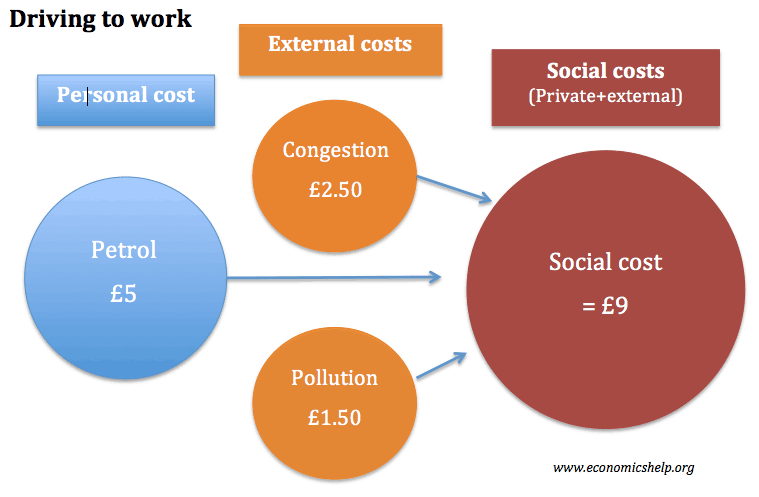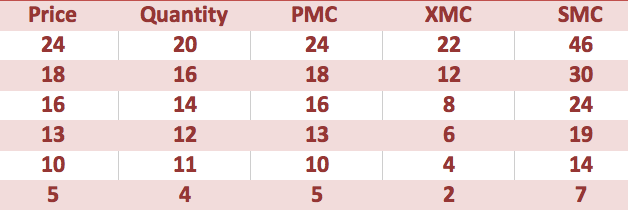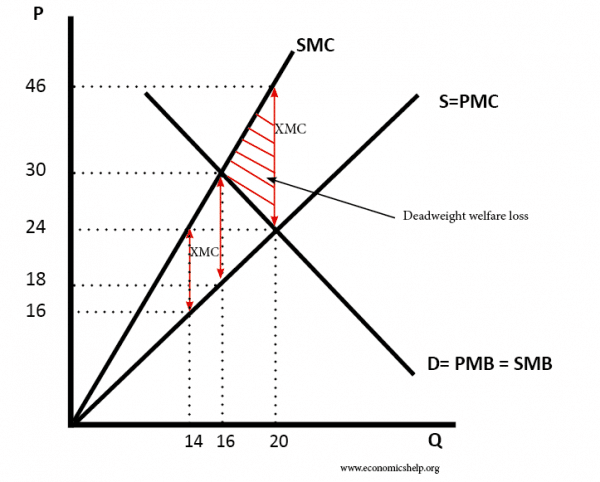Definition of social cost – Social cost is the total cost to society. It includes private costs plus any external costs.
Example of driving to work
- Costs of paying for petrol (personal cost)
- Costs of increased congestion (external cost)
- Pollution and worse air quality (external cost)
- The social cost includes all the above. (Petrol + congestion + pollution)
Example of social cost – smoking
If you smoke, the private cost is £6 for a packet of 20 cigarettes. But, there are also external costs to society
- Air pollution and risks of passive smoking
- Litter from discarded cigarette butts
- Health costs to society
The social costs of smoking include the total of all private and external costs.
Example of social cost of building airport
Private costs of airport
- Cost of constructing an airport.
- Cost of paying workers to run airport
External costs of airport
- Noise and air pollution to those living nearby.
- Risk of an accident to those living nearby.
- Loss of landscape.
Importance of social cost
Rational choice theory suggests individuals will only consider their private costs. For example, if deciding how to travel, we will consider the cost of petrol and time taken to drive. However, we won’t take into consideration the impact on the environment or congestion levels for other members in society.
Therefore, if social costs significantly vary from private costs then we may get a socially inefficient outcome in a free market.
See: Negative externalities and social inefficiency
Marginal social cost (MSC)
The marginal social cost is the cost to society of producing/consuming one extra unit of output.
Example of Marginal social cost
- PMC = Private marginal cost
- XMC = External marginal cost
- SMC = Social marginal cost
Diagram showing marginal social costs
For goods with negative externalities the social cost is greater than the private cost.
In a free market, if people ignore the external costs, the equilibrium will be at output 20. But, social efficiency (where social marginal cost = social marginal benefit) would be at output 16.
Related
- Social efficiency
- Tax on negative externality so people pay the true social cost.
- Social benefit



